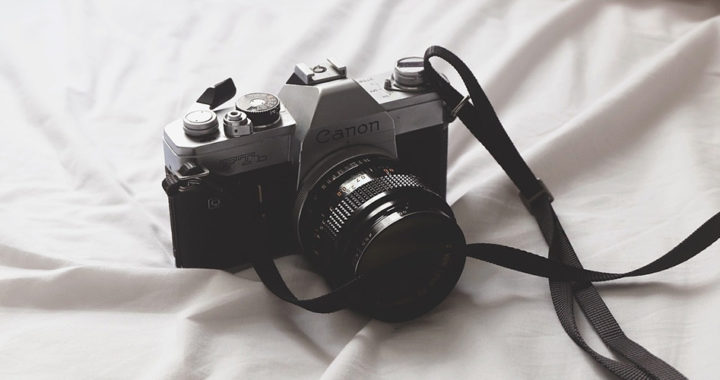A digital single-lens reflex camera or DSLR camera is a digital camera that features the mechanisms of a single-lens reflex camera, a digital imaging sensor, and interchangeable lenses. Take note that the “reflex” is a design scheme that uses a mirror to alternately reflect the light traveling through the lens to either the viewfinder or the image sensor.
The reflex design coupled with the digital imaging sensor and interchangeable lenses have enabled to DSLR camera render the film-based single lens reflex or SLR cameras obsolete. It is also worth mentioning that a DSLR camera takes superior photos and videos while allowing users a high degree of control over various options such as manual zoom, focus and depth of field, exposure levels, and shutter speed, among others.
Nonetheless, professional photographers to include photojournalists have used DSLR cameras because of their advantages over SLR cameras and digital point-and-shoot camera. However, the trend is changing because of the technological improvements in mirrorless digital cameras.
The Probable Death of DSLR: The Limitations and Disadvantages of Digital Single-Lens Reflex Cameras
One of the obvious drawbacks of DSLR cameras, when compared to mirrorless digital cameras and even smartphones equipped with high-end cameras, is their size. The main body of these cameras is generally bulky due to the reflex design scheme. Of course, the body would not suffice alone. Photographers also carry with them different add-on gears that include lenses of varying sizes and for different purposes, detachable flash, battery pack, and other peripherals.
In contrast, mirrorless digital cameras are more compact and thinner because of the absence of the reflex design or the mirror inside the camera body. These cameras have simpler design schemes generally made of a digital viewfinder, digital image sensor, and computer processing hardware. Smartphones are more compact than both DSLR and mirrorless cameras and thus, more ideal for casual photography.
Frédo Durand, a professor of electrical engineering and computer science at Massachusetts Institute of Technology, explained further the limitation of DSLR cameras and why these devices will soon become obsolete. For starters, he noted that a DSLR still has superior autofocus because it has a specific optical path that directs light via the mirror to specialized sensors.
He also noted that the manual viewfinders on DSLR cameras are slightly better than digital or electronic viewfinders. However, the autofocus capabilities and electronic viewfinders of newer generation mirrorless cameras are becoming as good as DSLR cameras.
Take note that the autofocus superiority of DSLR cameras is only applicable when taking photos and not when recording videos. It is also worth mentioning that the high degree of control found in these cameras is also present in mid-range to high-end mirrorless cameras. It is in these areas that mirrorless cameras can easily compete with DSLR cameras in terms of usability.
Duran also enumerates the advantages of mirrorless cameras over DSLR. These include small and simpler design that make manufacturing easier, more durability due to its simplicity, more flexible optical design, and more opportunity for advanced features such as image analysis based on artificial intelligence. These strengths collectively translate to the limitations and disadvantages of DSLR cameras.
An article by Berlin-based street photographer Sebastian Jacobitz mentioned that DSLR cameras would probably die out soon as their sales from 2012 to 2017 had plummeted while the sales of mirrorless cameras during the same period were steadily increasing. He also said that top DSLR manufacturers Canon and Nikon are now introducing mirrorless cameras in the market.
Jacobitz further noted that it has now become rare to see street photographers using DSLRs and this type of cameras are now confined to niche markets of sports photography and photojournalism. Mirrorless cameras are now becoming more appealing for professional photographers while casual users are keener on using their smartphones for casual photography.
Commercial photographer and photography instructor Alex Koloskov also has sentiments similar to Durand and Jacobitz. He also noted that the fact that mirrorless cameras have flip screens as viewfinders make a valid case point for choosing them over DSLR cameras because taking photos at various angles is easier.
He also noted that there are mirrorless cameras have other advantageous features to include wireless connectivity for instantly transferring image and video files and device interfacing, remote shooting with live view using smartphones, face focus tracking, focus peaking and magnification, and in some cases, better dynamic ranges than DSLRs.
Conclusion: The Cons of DSLR Cameras and the Pros of Mirrorless Cameras
In a nutshell, the disadvantages of DSLR cameras center on the reflex design scheme that leads to specific cons to include bulkier design, complicated manufacturing process, higher price points due to manufacturing, and negligible advantages. The gap between these cameras and mirrorless cameras are gradually closing. In the near future, it is highly possible for mirrorless cameras with performances that would render DSLRs obsolete.
FURTHER READINGS AND REFERENCES
- Durand, F. 2018 November 7. “The DSLR Will Likely Die: Are Mirrorless the Future of Big Standalone Cameras?” PetaPixel. Available online
- Koloskov, A. n.d. “How I Turned From Canon to Sony, or Why DSLR is Dead.” Photygy.com. Available online
- Jacobitz, S. 2018 March 4. “The Death of DSLRs.” PetaPixel. Available online

